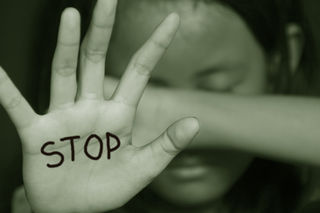Trauma
Childhood Sexual Trauma and Addiction
Understanding child sexual abuse and drug use.
Posted January 26, 2018

One in 6 boys, and 1 in 4 girls, are sexually abused before the age of 18. RAINN reports that every 8 minutes, government authorities respond to a report of child sexual abuse. According to the U.S. Department of Health and Human Services, in 2012, 62,939 cases of child sexual abuse (CSA) were reported. These numbers only reflect documented cases; sadly, it is widely accepted that many cases go unreported.
Linking Child Trauma Survivors and Drug Abuse
While both males and females can be affected by child sexual abuse, the prevalence rate is higher for females. It is estimated that nearly 15 million adolescent girls worldwide have experienced forced sex. According to UNICEF, global estimates for boys are not available. The trauma of sexual abuse can lead to problematic coping skills like substance use.
Substance use is often used as a means to cope with the painful traumatic memories. Research has shown that childhood abuse has continually been linked to substance use problems. Adults abused as children are reportedly 1.5 times more likely to say they used illicit drug use in the past year compared to individuals who were not abused as children. The age of onset for non-experimental drug use with CSA survivors is around 14, compared to 15 years of age for non-sexually abused peers. Some studies indicate that drug abuse is more common than alcohol use in adolescents who have been sexually traumatized.

Researchers have examined why child trauma survivors may be at an increased risk of drug abuse and findings showed that substances may be used to:
- cope with or block out the traumatic memories.
- deal with feelings of isolation and loneliness.
- improve feelings of self-worth and self-esteem.
- cope with mental health problems such as anxiety, depression, and PTSD.
Anxiety
Anxiety is an intense emotional state that results in excessive and persistent fear and worry. With CSA survivors, anxiety could be associated with the profound fear that the abuse will occur again. Some survivors may experience intense fear of going in public and lock themselves in the shelter of their homes. Others may experience, another mental health condition often associated with anxiety, known as panic attacks. Panic attacks are intense and overwhelming surges of anxiety and fear that result in physiological reactions, such as rapid heartbeats, and difficulty breathing.
Depression
Depression can be described as the persistent feeling of deep sadness. Common symptoms include prolonged periods of sadness, feelings of hopelessness, unexplainable and uncontrollable bouts of crying, significant weight loss or gain, lethargy, emotional apathy, or lack of interest and pleasure in previously enjoyed activities. Depression can have a negative impact on a person’s day-to-day functioning and can result in poor school and work performance, as well as friendship and relationship problems.
Post-traumatic Stress Disorder (PTSD)
PTSD is a mental health condition triggered by a traumatic event. Symptoms can emerge months or even years after the sexual trauma. Some common symptoms of PTSD include flashbacks, nightmares, intense distress when exposed to sights, sounds, or smells that trigger memories of the trauma, and bodily reactions when reminded of the trauma.
Dissociation
Dissociation, often associated with PTSD, is feeling disconnected or dissociated from one’s body. It can affect a person’s ability to focus, concentrate and function for periods of time. In an effort to detach from the sexual trauma, people learn to numb themselves from the pain. Dissociation is often referred to as avoidance coping, because survivors use it as a mechanism to escape and pull away from their past.
The Road to Recovery
The recovery from sexual trauma is a healing journey that takes time. Children who have been traumatized by sexual abuse often report feelings such as shame, terror, depression, and guilt. They often blame themselves for the abuse. Although drugs and alcohol can give survivors a moment of reprieve, there are dangerous risks and high costs to that emotional escape.
Sexual abuse not only leaves emotional and psychological scars, but it can lead to dangerous risk-taking behaviors, like using drugs. Substances are only a temporary fix and they can’t erase the past. Fortunately, dark moments don’t have to last, and drugs don’t have to cover unhealed wounds. Survivors can learn healthy coping skills and become a beacon of encouragement and hope to other youth who travel a similar path toward healing.
References
Banducci, A. N., Hoffman, E. M., Lejuez, C. W., & Koenen, K. C. (2014). The impact of childhood abuse on inpatient substance users: Specific links with risky sex, aggression, and emotion dysregulation. Child Abuse & Neglect, 38, 928–938. doi:10.1016/j.chiabu.2013.12.007
Khoury, L., Tang, Y. L., Bradley, B., Cubells, J. F., & Ressler, K. J. (2010). Substance use, childhood traumatic experience, and posttraumatic stress disorder in an urban civilian population. Depression and anxiety, 27(12), 1077-1086.
Mandavia, A., Robinson, G. G., Bradley, B., Ressler, K. J., & Powers, A. (2016). Exposure to childhood abuse and later substance use: Indirect effects of emotion dysregulation and exposure to trauma. Journal of traumatic stress, 29(5), 422-429.
Ulibarri, M. D., Ulloa, E. C., & Salazar, M. (2015). Prevention and outcomes for victims of childhood sexual abuse. Journal of child sexual abuse, 24(1), 35-54.




